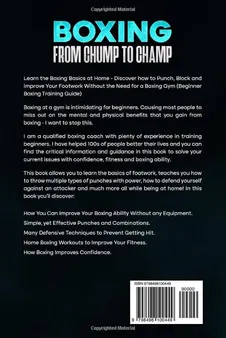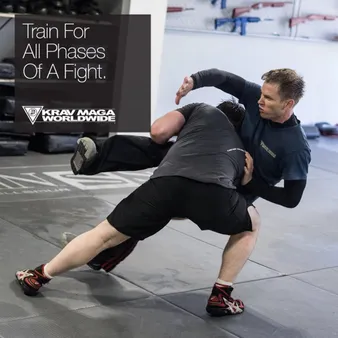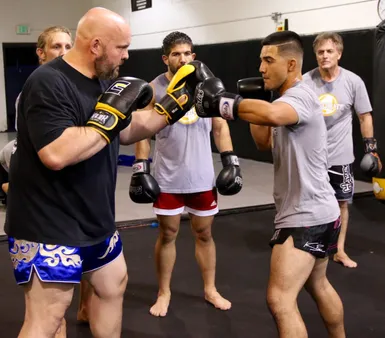Table of Contents
Welcome to Kizworld, your ultimate destination for exploring the world of boxing. Whether you seek to master the art of self-defense, enhance your fitness, or simply embark on a transformative journey, kizworld presents a comprehensive guide to learning boxing for both self-defense and fitness. Join us as we delve into the techniques, training methods, and mindset required to excel in this dynamic sport.
How to Learn Boxing for Self-Defense and Fitness: A Comprehensive Guide
I. Benefits of learning boxing for self-defense and fitness
Benefits of learning boxing for self-defense and fitness
In the realm of martial arts, boxing stands tall as a discipline that not only empowers individuals with self-defense skills but also transforms their physical and mental well-being. Whether your goal is to enhance your fitness, boost your confidence, or simply learn a valuable life skill, boxing offers a comprehensive path to achieving your aspirations. Embark on this journey with us as we delve into the world of boxing, exploring its benefits, techniques, training methods, and the mindset required to excel in this dynamic sport.
The advantages of learning boxing are multifaceted. For starters, it provides a full-body workout that engages various muscle groups, leading to improved strength, endurance, and coordination. The fast-paced nature of boxing also elevates your cardiovascular health, promoting a stronger heart and enhanced respiratory system. Additionally, boxing cultivates mental agility, strategic thinking, and the ability to remain calm under pressure, all of which are valuable skills that extend beyond the ring.
Moreover, boxing serves as an effective means of self-defense. By mastering the techniques of punching, footwork, and evasion, you gain the confidence and skills necessary to protect yourself in potentially dangerous situations. The discipline and focus required in boxing also translate into improved self-awareness and assertiveness, empowering you to navigate challenging circumstances with greater composure.
If you're intrigued by the prospect of learning boxing, the first step is to find a reputable gym or club in your area. Look for a facility with experienced instructors who can provide personalized guidance and ensure your safety. Once you've found a suitable gym, it's essential to commit to regular training sessions to witness significant progress. Consistency is key in boxing, as it takes time and dedication to develop the necessary skills and techniques.
As you progress in your boxing journey, you'll encounter various challenges that test your physical and mental limits. Embrace these challenges as opportunities for growth and development. Remember, setbacks are an inherent part of the learning process, and they often lead to valuable lessons that shape you into a more resilient and skilled boxer. Stay motivated by setting realistic goals for yourself and celebrating your achievements along the way.
Boxing is a rewarding sport that offers a multitude of benefits for both your physical and mental well-being. Whether you're seeking self-defense skills, improved fitness, or a new challenge, boxing provides a path to achieving your goals. Embrace the journey, stay committed, and you'll discover the transformative power of this noble art.
Benefit | Description |
Full-body workout | Engages various muscle groups, leading to improved strength, endurance, and coordination. |
Cardiovascular health | Elevates heart rate and improves respiratory system. |
Mental agility | Cultivates strategic thinking and the ability to remain calm under pressure. |
Self-defense | Provides skills and confidence to protect oneself in potentially dangerous situations. |
Self-awareness and assertiveness | Improves self-awareness and assertiveness, empowering individuals to navigate challenging circumstances with greater composure. |
Related posts: How to Learn Kickboxing for Self-Defense and Fitness, The Benefits of Boxing for Physical and Mental Health, The Best Boxing Equipment and Gear
II. The Basics of Boxing
The Basics of Boxing
Stance and Footwork
In boxing, your stance is the foundation of your defense and offense. A good stance will help you maintain balance, generate power, and avoid getting hit. The basic boxing stance is with your feet shoulder-width apart, your knees slightly bent, and your weight evenly distributed on both feet. Your hands should be held up in front of your face, with your elbows tucked in and your chin tucked down. Your feet should be turned slightly outward, so that you can pivot and move quickly in any direction.
Footwork is also essential in boxing. Good footwork will help you move around the ring, create angles, and avoid getting trapped in a corner. The basic footwork patterns in boxing are the forward step, the back step, the side step, and the pivot. You should practice these footwork patterns until they become second nature.
Punches
There are four basic punches in boxing: the jab, the cross, the hook, and the uppercut. The jab is a quick, straight punch that is used to keep your opponent at bay and set up other punches. The cross is a powerful, straight punch that is thrown with your rear hand. The hook is a short, looping punch that is thrown with your lead hand. The uppercut is a powerful, upward punch that is thrown with your rear hand.
Each punch has its own unique purpose and can be used in different situations. The jab is a good punch to use to start a combination, while the cross is a good punch to use to finish a combination. The hook is a good punch to use to attack your opponent's body, while the uppercut is a good punch to use to attack your opponent's head.
Punch | Description |
Jab | A quick, straight punch that is used to keep your opponent at bay and set up other punches. |
Cross | A powerful, straight punch that is thrown with your rear hand. |
Hook | A short, looping punch that is thrown with your lead hand. |
Uppercut | A powerful, upward punch that is thrown with your rear hand. |
Defense
Defense is just as important as offense in boxing. A good defense will help you avoid getting hit and stay in the fight. The basic defensive techniques in boxing are the block, the parry, the slip, and the roll. The block is a simple technique that involves using your gloves to block your opponent's punches. The parry is a more advanced technique that involves using your gloves to deflect your opponent's punches. The slip is a technique that involves moving your head out of the way of your opponent's punches. The roll is a technique that involves moving your entire body out of the way of your opponent's punches.
Each defensive technique has its own unique purpose and can be used in different situations. The block is a good technique to use against straight punches, while the parry is a good technique to use against hooks and uppercuts. The slip is a good technique to use against fast punches, while the roll is a good technique to use against powerful punches.
III. How to find a good boxing gym
How to find a good boxing gym
Location and convenience
- Look for a boxing gym that's conveniently located and has flexible hours that work with your schedule.
- If the gym is too far away or has inconvenient hours, you're less likely to stick with it.
Reputation and reviews
- Read online reviews and ask around for recommendations to find a boxing gym with a good reputation.
- Look for a gym that has experienced and qualified trainers who are knowledgeable about boxing and can help you reach your goals.
Atmosphere and culture
- Visit the gym in person to get a feel for the atmosphere and culture.
- Make sure the gym is clean and well-maintained, and that the trainers and members are friendly and welcoming.
Equipment and facilities
- Make sure the gym has the equipment and facilities you need to train effectively, such as boxing rings, bags, gloves, and mats.
- If you have specific needs or preferences, such as wanting to train with other women or children, make sure the gym can accommodate you.
Cost
- Compare the cost of membership at different boxing gyms to find one that fits your budget.
- Be aware that some gyms may offer discounts for students, seniors, or families.
Trial membership
- Many boxing gyms offer trial memberships that allow you to try out the gym before you commit to a full membership.
- Take advantage of this opportunity to get a feel for the gym and see if it's a good fit for you.
Find the boxing gym that fits your needs and you're sure to have a great time learning and training.
IV. Safety tips for boxing training
Safety tips for boxing training
Boxing is a physically demanding sport that requires proper safety measures to prevent injuries. Here are some essential safety tips to follow during boxing training:
- Wear appropriate gear: Always wear protective gear such as boxing gloves, headgear, mouthguard, and hand wraps to minimize the risk of injuries.
- Warm up properly: Start your training session with a thorough warm-up to prepare your body for the intense workout ahead.
- Use proper technique: Learn and practice the correct techniques for punching, footwork, and defense to avoid injuries caused by improper form.
- Stay hydrated: Drink plenty of water before, during, and after your training session to prevent dehydration and maintain optimal performance.
- Listen to your body: Pay attention to your body's signals and take breaks when needed. Pushing yourself too hard can lead to injuries.
- Train with a qualified instructor: Working with an experienced boxing instructor can help you learn proper techniques, avoid common mistakes, and stay safe during training.
Injury | Prevention |
Concussion | Wear headgear, use proper technique, avoid head-to-head contact. |
Hand injuries | Use hand wraps, punch with a closed fist, avoid hitting hard objects. |
Knee injuries | Warm up properly, use proper footwork, avoid overtraining. |
Shoulder injuries | Strengthen shoulder muscles, use proper punching technique, avoid overtraining. |
Eye injuries | Wear headgear with eye protection, avoid poking or hitting the eyes. |
By following these safety tips, you can minimize the risk of injuries and enjoy a safe and productive boxing training experience.
If you are interested in learning more about boxing, check out our related posts on the benefits of boxing, boxing equipment, and basic boxing skills.
V. Conclusion
As you embark on your boxing journey, remember that progress is a gradual process that requires dedication, perseverance, and a willingness to learn. Embrace the challenges, celebrate your achievements, and never stop striving for improvement. Whether you choose to pursue boxing for self-defense, fitness, or competition, the rewards are immense. The skills you acquire will empower you both physically and mentally, leaving you with a newfound sense of confidence and resilience. So step into the ring, embrace the challenge, and unlock the transformative power of boxing.